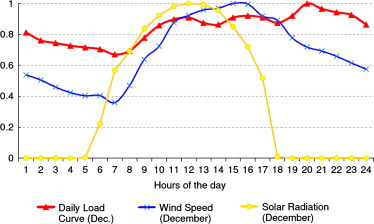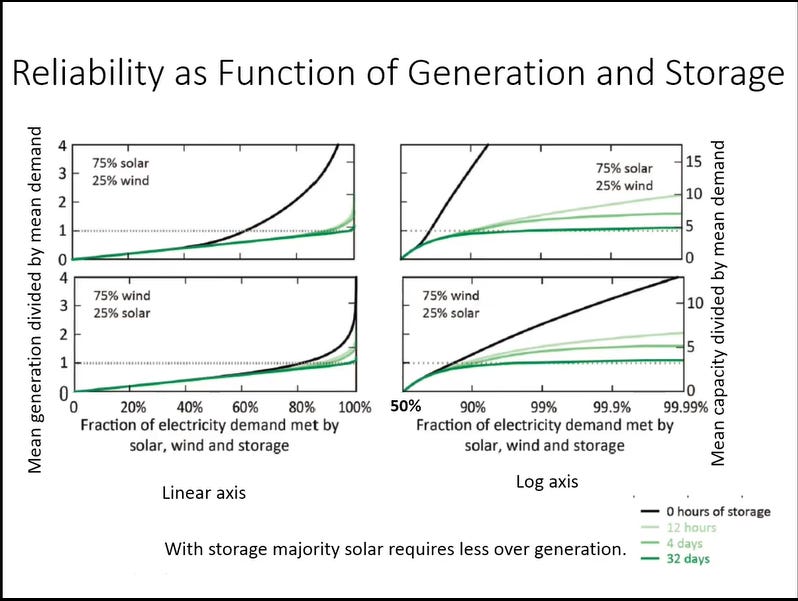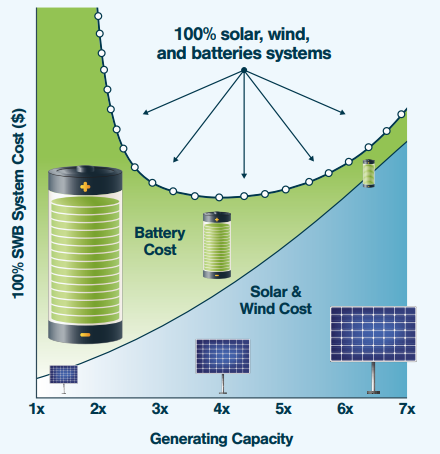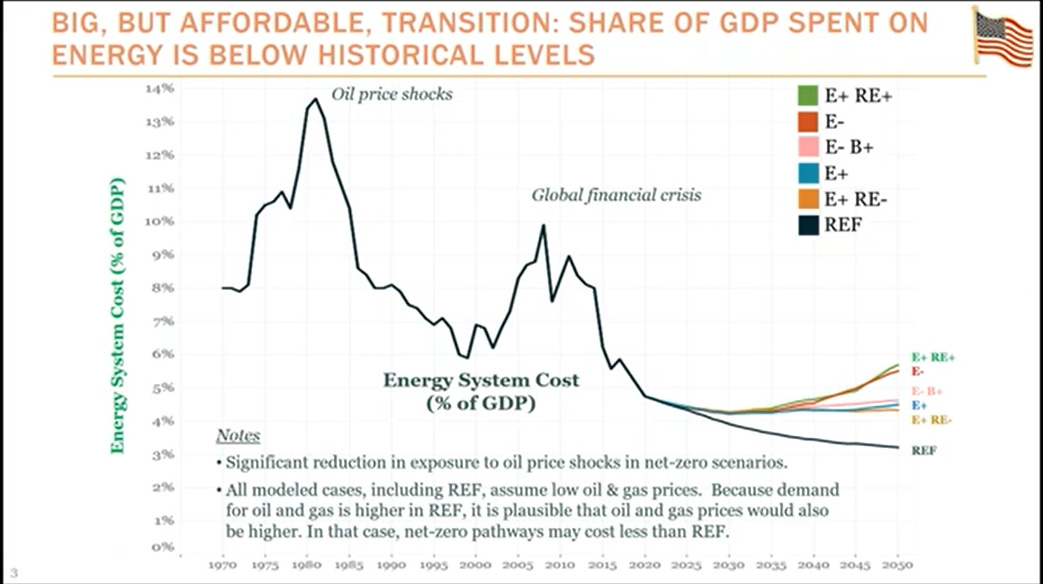Ambitions versus possibilities - Is 100% renewable energy possible?
How do we get to a 100 per cent renewable energy world. More importantly, what do we need?
Introduction
Last year, over 29 per cent of the global energy supply was sourced through renewable, carbon-free energy sources. As global superpowers push for an expedited energy transition to meet national development goals, the ever-growing euphoria of carbon-neutral energy technology has attracted interest from developing economies, researchers, and developing industries.
Powering the civilization with energy sourced completely from the wind, sun, water, etc., is an ideally modelled scenario where thermal-based energy plants - technology releasing the highest portion of the carbon in the air, are completely shut down. Top-level intergovernmental forums and national representatives press upon the importance of universal generation carbon-free power and individually set ambitious renewable energy targets (most of which are not met); however, let’s pause and ask ourselves - is 100 per cent renewable energy possible?
Hypothetical, assumption-heavy models conclude that it is possible, but we would require a broader portfolio of renewable technology, scenario-based innovation, and more importantly, conducive financing and mere political will. But most researchers state that the question isn’t about how this would happen; it’s about when this would happen.
Here, two significant questions arise, one - What are the major challenges present at the forefront of this clean energy transition, and what can we do about them? ; and two - Suppose we do get to 100 renewables, at cost would this happen?
Through this writeup, we draw inspiration from the work of leading scientists in the industry and their 100 per cent renewable energy hypothesis. We also discuss the importance of inducing diversity in the technology mix of a 100 per cent renewable energy scenario. Moreover, instead of outlining a concrete pathway, we present our rationale in the form of broadly explained answers to the two aforementioned questions.
The problem of variable renewable energy power
Intermittency in variable renewable energy (VRE) is the primary driver of battery innovation and usage. Figure 1 shows the varying generation for two power sources - wind and solar. There is a visible variation in power generation at different times of the day. But what does this mean?

Wind and solar power generation cannot be controlled by any human intervention. On a sunny day, you would see an overproduction of power from a solar plant; however, the same plant would underproduce power on cloudy days. A similar comparison can be made for wind plants too. Both wind and solar see drastic fluctuations throughout the day leading to an unreliable source of power. Figure 1 depicts the average daily load curve for a renewable energy system. Its integral for us to not that individual energy systems generate a quantum that is just 1/3rd of its marked value. Ideally, we would want 100 per cent of the power to be available 100 per cent of the time, but that isn’t the case. These systems produce just 10 per cent of the power capacity 60 per cent of the time. It just shows that wind power or solar power is not performing to maximum capacity for the vast majority of the time.
While varying conditions would lead to changing power production trends, power demand would fairly be the same every day. Unlike variable renewable energy, thermal plants that currently generate almost half of the power supply in the US can be manually turned on or off. It can also increase or decrease power production based on demand. This unique ability has given thermal plants an integral position in most power systems all over the world. Thermal power can cater to increased power demand even while renewable systems in a region are underproducing. That said, battery technology is a 21st-century innovation that can mark an end to variability in renewable energy. Deliberate convergence between batteries and renewable power sources can improve the integrity of the power grid while ensuring a resilient and reliable power supply.
Solutions for a renewable-powered future
Let's look at some of the possible solutions to meet the difference between demand and supply- Firstly, Lower demand, i.e. to change people’s consumption patterns and behaviour. Secondly, Widespread transmission lines - build secondary infrastructure to transfer energy long distances from the source. Dispatchable sources can also be used when generation from intermittent sources is inadequate. They can be turned on or off; in other words, they can adjust their power output supplied to the electrical grid on demand, coal, natural gas, etc. One of the more popular solutions provided is to overbuild Renewable Energy- to produce more than the required capacity so that you prepare for the worst-case scenarios. Finally, Deploy storage technologies - we can store the excess renewable energy and use it when we most require it.
Reliability as a function of generation and storage
The last 2 solutions mentioned above are of great importance to us; recent research on this topic analyzed 36 years of global, hourly weather data (1980–2015) to quantify the co-variability of solar and wind resources as a function of time and location, over multi-decadal time scales and up to continental length scales. The analysis indicated that the wind-heavy or solar-heavy U.S.-scale power generation portfolios could, in principle, provide 80 per cent of recent total annual U.S. electricity demand. However, to reliably meet 100 per cent of total annual electricity demand, seasonal cycles and unpredictable weather events require several weeks worth of energy storage and/or the installation of much more solar and wind power capacity than is routinely necessary to meet peak demand.

The conclusion of such data-heavy analysis is positive and complicated - the world will be able to run on 100 per cent renewable energy, but this may be an expensive affair if battery prices do not decrease drastically. The involvement of diverse technology will be required, and arrangements would have to be made strategically.
The possibility and capability of a 100 per cent renewable energy world
We edge towards the fastest, deepest disruption in world energy in the history of our civilization. Like most disruptions, this one is driven by the convergence of several key technologies whose costs and capabilities have been improving on consistent and predictable trajectories – namely, solar photovoltaic power, wind power, and lithium-ion battery energy storage. More recently, famed researchers have rolled out publically available insights on the possibility of inducing 100 per cent renewable energy into the market. The solar, wind, battery (SWB) combination has gained exponential traction in the past decade, largely due to the falling price of Solar PV and storage technology. In the past decade, solar, wind, and battery systems have seen their lowest cost of energy (LCOE) plummet by 82 per cent, 42 per cent and 87 per cent, respectively. The monumental drop has almost immediately caught the eyes of international investors looking to play a strategic role in the costly affair of the clean energy transition. Although, this is not what interests us most.
Research suggests that a highly reliable (99.97 per cent) 100 per cent renewable system or a 100 per cent SWB system will have the ability to generate energy 3-5 times more than the average global demand. The project would entail just 35-90 hours of battery storage requirements and solar capacity almost 10 times higher than the wind capacity of the system, largely due to the dropping costs of solar technology. Tony Seba, a renowned energy scientist, often refers to excess power as ‘superpower’. Remarkably, the quantum of superpower generated at the LCOE could be increased by almost 3 times if investments were raised by just 20 per cent. It isn't easy to overstate how significant the impact of superpower will be. History shows that energy abundance enables and supports social and economic development in the broadest sense. So a superabundance of extremely cheap energy with little or no social or environmental externalities will create unprecedented opportunities for every region that chooses to adopt a 100% SWB system, in both less-developed and more-developed countries alike.

Contrary to a historical narrative, 100 per cent renewable energy is physically and economically affordable. The concept and the idea both create the possibility of supporting millions of lives while deriving energy equity in most parts of the world. Although we were able to identify the technical potential of overproducing renewable energy, we wanted to know how much this would cost.
More renewable energy is cheaper than you think.
A group of Princeton Researchers conducted a study titled #Net-Zero-America that focused on creating pathways to eliminate carbon-emitting power sources in the US. Through this, they identified 5 different development models, using which the country could reach Net-Zero emissions by mid-century using technologies that exist today. Further innovations will only help, but for now, the group used feasible and easily available technologies. The study's goal was to understand several dimensions and variations of these technologies to study the impact and tradeoffs to reach the desired Net-Zero.

Every model under the research umbrella is relatively affordable but would take away a small share of the current US GDP. However, it is evident that the spending on energy systems through these models is equal to or lesser than the nation’s expenditure on energy in the recent decades. We can observe the high volatility in these prices mainly due to the fluctuations in oil prices. But even during the most prosperous times of the US economy, the government spent around 8-9% of the GDP on energy systems, mainly oil and natural gas.
What strikes us is that we don't need a significant sacrifice of our economic budget to undergo this transition to net zero. It is possible. Moreover, the transition to cleaner sources of energy production would have a significant impact on public health savings. Cost is no longer a central barrier to this transition. We’ve seen the rapidly falling prices of wind, solar, and batteries. Continued advancements in technology and strategic economic pathways could further reduce transition costs and probably reduce project timelines too!
It’s not about whether to go to zero carbon, but how to get there
Despite some debate, most experts agreed that 100 per cent renewable energy is one of the fastest methods of getting there. Current modelling does hint towards the possibility of 100 per cent Renewable energy being economically feasible. We believe that the future will be one of Renewable abundance. The question isn’t about how this would happen; it’s about when this would happen.



